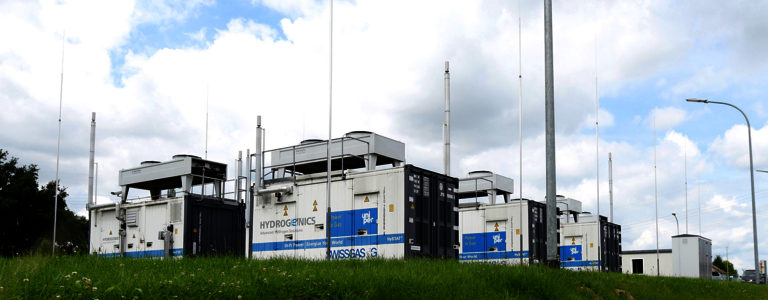
How green methane contributes to the energy transition
Power from the sun and wind is abundant and carbon neutral. But what is produced often exceeds local demand. A pilot plant at Falkenhagen in the German state of Brandenburg aims to make storing the green energy possible. The operator is relying on Bilfinger’s technical expertise to monitor and control the facility.
Germany’s north-eastern Prignitz region features a wealth of wind and solar farms that produce large quantities of green power. There are, however, few industrial consumers in the area and the power often cannot be fed into the grid because of the risk of overloading it. That is why energy company Uniper chose this location for its pilot plant to trial storing and transmitting wind power. Bilfinger assisted with the construction of the power-to-gas facility by providing the control system and data storage devices. The company’s responsibilities also included a leakage monitoring system for the hydrogen feed-in as well as remote access to dispatching.
As early as in its first year of operation, the pilot plant used wind power to produce more than two million kilowatt- hours of green hydrogen via electrolysis. Thanks to a 1.6-kilometer-long pipeline, the hydrogen is fed directly into the gas grid.
The highly promising experience gained with the pilot plant ultimately resulted in a follow-up project. Now, the hydrogen is added to carbon dioxide from a bioethanol plant to create methane – a synthetic natural gas. As a result, the plant is capable of producing up to 1,400 cubic meters of synthetic methane per day. That’s equivalent to 14,500 kilowatt-hours of power – enough for 200 natural gas-powered vehicles to travel about 150 kilometers each day.
Green methane’s major advantage is that – compared to pure hydrogen – making it available to the electricity and heating market, to industry and also as a vehicle fuel is relatively straightforward. That’s because it’s easier to safely transport and store it using existing infrastructure.
With these kinds of facilities, Bilfinger’s aim to serve as a one-stop shop really pays dividends, especially as many hydrogen production plants are initially designed and built as compact units that are then successively expanded following successful commissioning. Within a few years, a bigger gas treatment plant, more extensive piping, upgraded controls and system integration are needed. Bilfinger bundles all of these services into one performance package.
Bilfinger Hydrogen value chain

Contact in case of questions:
Massimo Pardocchi
Global Development Director Projects & Key Account Management
massimo.pardocchi@bilfinger.com
